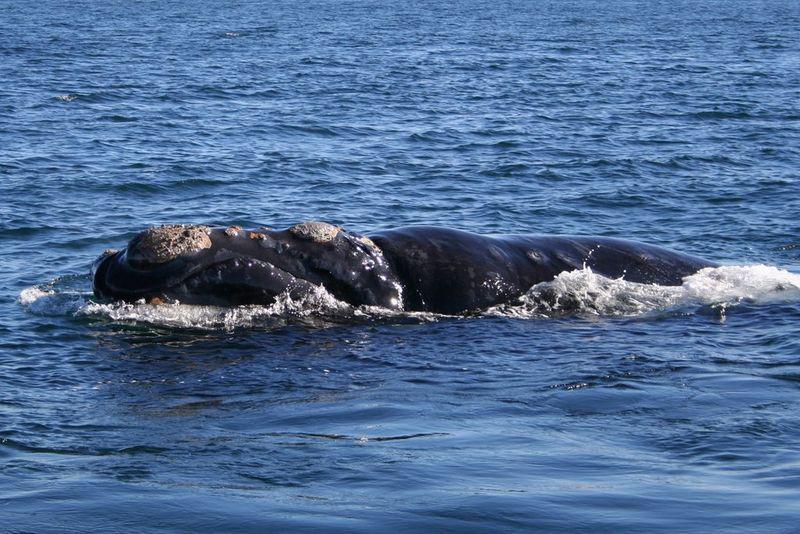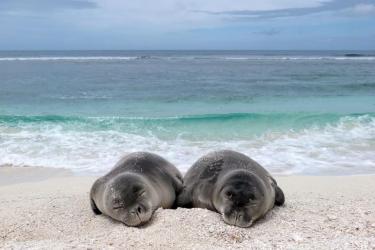This Report to Congress summarizes the status of each species that has or will have a recovery plan, the status of the recovery plan, and the completion date for the last 5-year review.
With this report, NOAA Fisheries is updating progress made on its strategic approach to endangered species recovery. This approach focuses agency resources on species for which immediate, targeted efforts are needed to stabilize their populations and prevent extinction.
The report highlights recovery progress for eight of the species identified in the Species in the Spotlight initiative. They are notable because the best available information points to their extinction in the near future due to rapid population decline or habitat destruction. These species need focused intervention to stabilize their population and prevent their extinction.
During the two years covered in this report, the number of listed species under NOAA Fisheries jurisdiction increased 10 percent. During that period, we managed 97 domestic (includes some transnational) species, including:
- Salmon
- Sturgeon
- Sawfish
- Seagrass
- Mollusks
- Sea turtles
- Corals
- Marine mammals
We also managed 66 foreign species. In this report, we address 90 transnational and domestic species for which a recovery plan has or will be developed, including two newly-listed transnational species:
- Giant Manta Ray (Manta birostris), which was listed as threatened on January 22, 2018.
- Oceanic Whitetip Shark (Carcharhinus longimanus), which was listed as threatened on January 30, 2018.
One Species Delisted
The Endangered Species Act defines a species to include “any subspecies of fish or wildlife or plants, and any distinct population segment (DPS) of any species of vertebrate fish or wildlife which interbreeds when mature.” In January 2017, NOAA Fisheries delisted the DPS of the canary rockfish. New genetic analysis indicated the population did not meet the DPS criteria; thus, the original listing was in error.
Status of Recovery Plans
Of the 90 domestic or transnational listed species for which a recovery plan has or will be developed, 54 had final recovery plans, two had a draft recovery plan, and 25 had plans in development. Nine species recovery plans had not been started. We have many multispecies plans, as well as multiple plans for one species (for example, sea turtles). Thus the number of plans does not directly correspond to the number of species.
The status of these 90 species was:
- 27 (30 percent) were stabilized or increasing.
- 18 (20 percent) were declining.
- 9 (10 percent) were mixed, with their status varying by population location.
- 36 (40 percent) were unknown, because we lacked sufficient trend data to make a determination.
Read the ESA biennial report (PDF, 108 pages).
Recovery of Species
Recovery is the process of restoring species listed under the ESA to the point that they no longer require ESA protections. A recovery plan serves as a road map for species recovery—it lays out where to go and how to get there. Without a plan to organize, coordinate, and prioritize recovery actions, these efforts may be inefficient, ineffective, or misdirected. Recovery plans are guidance documents—they are not regulatory. The ESA clearly envisions them as the central organizing tool guiding each species’ progress toward recovery.
Learn more about the recovery of species under the ESA
Partnerships for Recovery
Recovering threatened and endangered species is a complex and challenging process, but one that offers long-term benefits to the health of our environment and communities.
Recovery actions may require:
- Restoring or preserving habitat.
- Minimizing or offsetting the effects of actions that harm species.
- Enhancing population numbers.
- A combination of the above.
Many of these actions also help to provide communities with healthier ecosystems, cleaner water, and greater opportunities for recreation, both now and in the future.
Many partners fund and implement the recovery actions discussed in this report. Partnerships with a variety of stakeholders are critical to achieving species recovery goals. Our partners in these efforts include:
- Private citizens.
- Federal, state, and local agencies and tribes.
- Interested organizations.
NOAA programs that directly fund recovery actions include:
- The Species Recovery Grants to States Program, authorized under section 6 of the ESA. This program provides grant funding to partnering state agencies to support management, outreach, research, and monitoring projects that have direct conservation benefits for listed species.
- The Species Recovery Grants to Tribes Program, started by NOAA Fisheries in FY 2010. This program supports tribally-led recovery efforts that directly benefit listed species.
- The Pacific Coastal Salmon Recovery Fund, established by Congress in FY 2000. This fund protects, restores, and conserves Pacific salmon and steelhead populations and their habitats.
Projects funded through these programs often address priority actions identified in recovery plans and thus make important contributions to the recovery of listed species.
How You Can Help
Contact your local NOAA Fisheries regional office, state wildlife agency, or tribal wildlife agency to find out how you can help participate in recovery efforts for local endangered species.
Previous Reports to Congress
- 2014–2016 (PDF, 46 pages)
- 2012–2014 (PDF, 37 pages)
- 2010–2012 (PDF, 32 pages)
- 2008–2010 (PDF, 200 pages)
- 2006–2008 (PDF, 184 pages)
- 2004–2006 (PDF, 186 pages)
- 2002–2004 (PDF, 178 pages)
- 2000–2002 (PDF, 52 pages)
- 1998–2000 (PDF, 176 pages)
- 1996–1998 (PDF, 151 pages)
- 1994–1996 (PDF, 92 pages)
- 1992–1994 (PDF, 98 pages)
- 1989–1991 (PDF, 56 pages)







